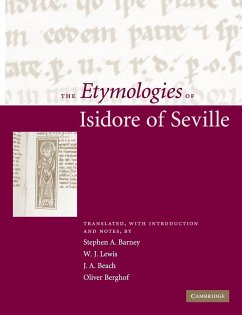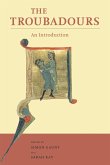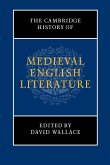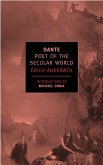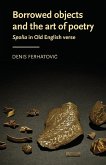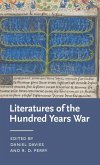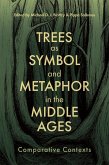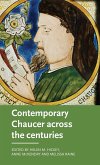The Etymologies of Isidore of Seville
The Etymologies of Isidore of Seville
- Broschiertes Buch
- Merkliste
- Auf die Merkliste
- Bewerten Bewerten
- Teilen
- Produkt teilen
- Produkterinnerung
- Produkterinnerung
This book provides a complete English translation - together with introduction and notes - of the Etymologies of Isidore of Seville, the main encyclopedic resource in the Middle Ages. This highly-readable translation of the text is essential reading for the medievalist, linguist or student of the history of Western thought.
Andere Kunden interessierten sich auch für
![The Troubadours The Troubadours]() Simon Gaunt / Sarah Kay (eds.)The Troubadours43,99 €
Simon Gaunt / Sarah Kay (eds.)The Troubadours43,99 €![The Cambridge History of Medieval English Literature The Cambridge History of Medieval English Literature]() David Wallace (ed.)The Cambridge History of Medieval English Literature81,99 €
David Wallace (ed.)The Cambridge History of Medieval English Literature81,99 €![Dante: Poet of the Secular World Dante: Poet of the Secular World]() Erich AuerbachDante: Poet of the Secular World15,99 €
Erich AuerbachDante: Poet of the Secular World15,99 €![Borrowed objects and the art of poetry Borrowed objects and the art of poetry]() Denis Ferhatovic (Assistant Professor)Borrowed objects and the art of poetry33,99 €
Denis Ferhatovic (Assistant Professor)Borrowed objects and the art of poetry33,99 €![Literatures of the Hundred Years War Literatures of the Hundred Years War]() Literatures of the Hundred Years War37,99 €
Literatures of the Hundred Years War37,99 €![Trees as Symbol and Metaphor in the Middle Ages Trees as Symbol and Metaphor in the Middle Ages]() Trees as Symbol and Metaphor in the Middle Ages149,99 €
Trees as Symbol and Metaphor in the Middle Ages149,99 €![Contemporary Chaucer across the centuries Contemporary Chaucer across the centuries]() Contemporary Chaucer across the centuries158,99 €
Contemporary Chaucer across the centuries158,99 €-
-
-
This book provides a complete English translation - together with introduction and notes - of the Etymologies of Isidore of Seville, the main encyclopedic resource in the Middle Ages. This highly-readable translation of the text is essential reading for the medievalist, linguist or student of the history of Western thought.
Hinweis: Dieser Artikel kann nur an eine deutsche Lieferadresse ausgeliefert werden.
Hinweis: Dieser Artikel kann nur an eine deutsche Lieferadresse ausgeliefert werden.
Produktdetails
- Produktdetails
- Verlag: Cambridge University Press
- Seitenzahl: 490
- Erscheinungstermin: 2. April 2015
- Englisch
- Abmessung: 246mm x 189mm x 27mm
- Gewicht: 944g
- ISBN-13: 9780521145916
- ISBN-10: 0521145910
- Artikelnr.: 28176025
- Herstellerkennzeichnung
- Libri GmbH
- Europaallee 1
- 36244 Bad Hersfeld
- gpsr@libri.de
- Verlag: Cambridge University Press
- Seitenzahl: 490
- Erscheinungstermin: 2. April 2015
- Englisch
- Abmessung: 246mm x 189mm x 27mm
- Gewicht: 944g
- ISBN-13: 9780521145916
- ISBN-10: 0521145910
- Artikelnr.: 28176025
- Herstellerkennzeichnung
- Libri GmbH
- Europaallee 1
- 36244 Bad Hersfeld
- gpsr@libri.de
Introduction; Correspondence of Isidore and Braulio; The Etymologies: I: Grammar and its parts; II. Rhetoric and dialectic; III. Mathematics
whose parts are arithmetic
music
geometry
and astronomy; IV. Medicine; V. Laws and the instruments of the judiciary
and chronology; VI. The order of scripture
cycles and canons
liturgical feasts and offices; VII. Gods and angels
prophetic nomenclature
names of the holy fathers
martyrs
clerics
monks
and other names; VIII. Church and synagogue
religion and faith
heresies
philosophers
poets
sibyls
magicians
pagans
gods of the gentiles; IX. Languages of the nations
royal
military
and civic terminology
family relationships; X. Certain terms in alphabetical order; XI. Human beings and their parts
the ages of humans
portents and metamorphoses; XII. Four-footed animals
creeping animals
fish
and flying animals; XIII. Elements
that is
the heavens and the air
waters
the sea
rivers and floods; XIV. Earth
paradise
the regions of the whole globe
islands
mountains
other terms for places
and the lower regions of the earth; XV. Cities
urban and rural buildings
fields
boundaries and measures of fields
roads; XVI. Earthly materials from land and water
every kind of gem and precious stones
ivory likewise
treated along with marble
glass
all the metals
weights and measures; XVII. Agriculture
crops of every kind
vines and trees of every kind
herbs and all vegetables; XVIII. Wars and triumphs and the instruments of war
the forum
spectacles
games of chance and ball games; XIX. Ships
ropes
and nets
iron workers
the construction of walls and all the implements of building
also wool-working
ornaments
and all kinds of clothing; XX. Tables
foodstuffs
drink
and their vessels
vessels for wine
water
and oil
vessels of cooks
bakers
and lamps
beds
chairs
vehicles
rural and garden implements
equestrian equipment.
whose parts are arithmetic
music
geometry
and astronomy; IV. Medicine; V. Laws and the instruments of the judiciary
and chronology; VI. The order of scripture
cycles and canons
liturgical feasts and offices; VII. Gods and angels
prophetic nomenclature
names of the holy fathers
martyrs
clerics
monks
and other names; VIII. Church and synagogue
religion and faith
heresies
philosophers
poets
sibyls
magicians
pagans
gods of the gentiles; IX. Languages of the nations
royal
military
and civic terminology
family relationships; X. Certain terms in alphabetical order; XI. Human beings and their parts
the ages of humans
portents and metamorphoses; XII. Four-footed animals
creeping animals
fish
and flying animals; XIII. Elements
that is
the heavens and the air
waters
the sea
rivers and floods; XIV. Earth
paradise
the regions of the whole globe
islands
mountains
other terms for places
and the lower regions of the earth; XV. Cities
urban and rural buildings
fields
boundaries and measures of fields
roads; XVI. Earthly materials from land and water
every kind of gem and precious stones
ivory likewise
treated along with marble
glass
all the metals
weights and measures; XVII. Agriculture
crops of every kind
vines and trees of every kind
herbs and all vegetables; XVIII. Wars and triumphs and the instruments of war
the forum
spectacles
games of chance and ball games; XIX. Ships
ropes
and nets
iron workers
the construction of walls and all the implements of building
also wool-working
ornaments
and all kinds of clothing; XX. Tables
foodstuffs
drink
and their vessels
vessels for wine
water
and oil
vessels of cooks
bakers
and lamps
beds
chairs
vehicles
rural and garden implements
equestrian equipment.
Introduction; Correspondence of Isidore and Braulio; The Etymologies: I: Grammar and its parts; II. Rhetoric and dialectic; III. Mathematics
whose parts are arithmetic
music
geometry
and astronomy; IV. Medicine; V. Laws and the instruments of the judiciary
and chronology; VI. The order of scripture
cycles and canons
liturgical feasts and offices; VII. Gods and angels
prophetic nomenclature
names of the holy fathers
martyrs
clerics
monks
and other names; VIII. Church and synagogue
religion and faith
heresies
philosophers
poets
sibyls
magicians
pagans
gods of the gentiles; IX. Languages of the nations
royal
military
and civic terminology
family relationships; X. Certain terms in alphabetical order; XI. Human beings and their parts
the ages of humans
portents and metamorphoses; XII. Four-footed animals
creeping animals
fish
and flying animals; XIII. Elements
that is
the heavens and the air
waters
the sea
rivers and floods; XIV. Earth
paradise
the regions of the whole globe
islands
mountains
other terms for places
and the lower regions of the earth; XV. Cities
urban and rural buildings
fields
boundaries and measures of fields
roads; XVI. Earthly materials from land and water
every kind of gem and precious stones
ivory likewise
treated along with marble
glass
all the metals
weights and measures; XVII. Agriculture
crops of every kind
vines and trees of every kind
herbs and all vegetables; XVIII. Wars and triumphs and the instruments of war
the forum
spectacles
games of chance and ball games; XIX. Ships
ropes
and nets
iron workers
the construction of walls and all the implements of building
also wool-working
ornaments
and all kinds of clothing; XX. Tables
foodstuffs
drink
and their vessels
vessels for wine
water
and oil
vessels of cooks
bakers
and lamps
beds
chairs
vehicles
rural and garden implements
equestrian equipment.
whose parts are arithmetic
music
geometry
and astronomy; IV. Medicine; V. Laws and the instruments of the judiciary
and chronology; VI. The order of scripture
cycles and canons
liturgical feasts and offices; VII. Gods and angels
prophetic nomenclature
names of the holy fathers
martyrs
clerics
monks
and other names; VIII. Church and synagogue
religion and faith
heresies
philosophers
poets
sibyls
magicians
pagans
gods of the gentiles; IX. Languages of the nations
royal
military
and civic terminology
family relationships; X. Certain terms in alphabetical order; XI. Human beings and their parts
the ages of humans
portents and metamorphoses; XII. Four-footed animals
creeping animals
fish
and flying animals; XIII. Elements
that is
the heavens and the air
waters
the sea
rivers and floods; XIV. Earth
paradise
the regions of the whole globe
islands
mountains
other terms for places
and the lower regions of the earth; XV. Cities
urban and rural buildings
fields
boundaries and measures of fields
roads; XVI. Earthly materials from land and water
every kind of gem and precious stones
ivory likewise
treated along with marble
glass
all the metals
weights and measures; XVII. Agriculture
crops of every kind
vines and trees of every kind
herbs and all vegetables; XVIII. Wars and triumphs and the instruments of war
the forum
spectacles
games of chance and ball games; XIX. Ships
ropes
and nets
iron workers
the construction of walls and all the implements of building
also wool-working
ornaments
and all kinds of clothing; XX. Tables
foodstuffs
drink
and their vessels
vessels for wine
water
and oil
vessels of cooks
bakers
and lamps
beds
chairs
vehicles
rural and garden implements
equestrian equipment.

